
This post is part of a series of Queerty conversations with models, trainers, dancers, and, well, people who inspire us to stay in shape–0r just sit on the couch ogling them instead.
Name: Johnson Chong, 34
City: Singapore. I was born and grew up in New York City.
Occupation: I just call myself a self-mastery guide. I integrate yoga, pilates, meditation, reiki in my work. I also do something called “inner guidance.” It’s a deeply emotional, visceral experience. I just integrate a variety of experiences to help people find their own truth.
How about we take this to the next level?
Our newsletter is like a refreshing cocktail (or mocktail) of LGBTQ+ entertainment and pop culture, served up with a side of eye-candy.
Favorite Gym: At our studio, Sagehouse, we’re fully equipped with pilates equipment and I do calisthenics.
Favorite Work Out Song: I like to listen to motivational music. Trevor Hall, Anima…all conscious songwriters. They have a folk-indieness to them. I tend to have playlists filled up with their kind of music. It’s consciousness-based.
Recommended Work-Out Foods: It depends. Everyone has a different physical constitution. I generally refer clients to a nutritionist. I’m more concerned with emotional well-being.
Best Workout Outfit: Dry-fit clothing. I like Lulu Lemon stuff. I need breathable clothes. It needs to be loose. Any sporting brand that has breathable clothing. It’s really hot in Singapore, and it’s really humid here. So I tend to wear dry-fit clothing.
How do you balance staying in shape and having fun? Make things into a game and spend quality time outdoors with people. Go hiking, climbing or whatnot. I love nature and going outside. Spend time with friends. There are a bunch of guys in Singapore that just go to the gym six days a week. That’s a bit excessive. Go live life. If you spend all your time in the gym, and you’re not socializing with friends, who are you looking good for?
When did you discover the power of meditation and yoga? I was 19. By the time I was 21, I was really coming to terms with my identity as a gay person. I lived a very repressed life growing up. Meditation really helped me to remove myself from my story for a moment and it helped me to get perspective. It really helped me to look at my life. It helped me come to terms with who I am.
Related: Trainer Kenta Seki on how to learn to love your own body no matter your shape or size
One thing you’re very forthright about is your own abusive childhood, and how you carried that pain and trauma with you. What is it about staying active through yoga and meditation that helped you deal with and release that trauma?
At first, I did yoga as part of my acting training. The spiritual stuff came later on. What really surprised me about yoga was that it allowed my body to release its story. At the end of yoga class, my body would start going through these emotional experiences. It’s not like I was thinking about my abusive childhood. My body was crying. All these emotions were coming up. I don’t have that experience anymore, because it’s all out of my system.
For our readers, exactly what’s the theory behind that?
In yogic philosophy, there are five layers of kosas. The first three are the physical, mental and emotional. All three of those are connected. Everything is experienced through the body. If we have a thought, if we feel sad, there’s a physical sensation. Everything gets stored in the body. I like to think of it like a tree: if you cut a tree open, the rings will tell you if there was a drought or a lot of rain. Our bodies do that…they record trauma. In acting class, my teacher cued to lengthen my neck and loosen my jaw. I had this whole flashback to my tutor who used to take a ruler and beat me across the neck. I started tensing and wheezing and crying. That was just from someone touching my neck to soften it. The body remembered pain because it was trying to defend itself. It’s very philosophical. There is a science of mapping energy and chakras.
How does doing yoga prepare you psychologically and emotionally?
As a regular routine, yoga is really helpful for clearing out the garbage in your body. If you think of chicken in the supermarket, there’s that thin film over it, fascia. In younger chicken, it’s thinner. In older chicken, it’s thicker. It’s the same in human beings. Our fascia gets tighter. Physically we start to bunch up. So yoga is all about creating space in the fascia and in the joints so that blood can flow. If you have blood flowing, you have energy flowing better. You make thoughts from a place of clarity rather than confusion.
So many of us—particularly gay men—feel a lot of pressure to maintain a certain gym build, or to avoid carrying extra weight. Can yoga be a substitute for the gym?
There needs to be a balance. The gym is a different energy. Yoga is softer. A lot of people who go to the gym only work concentrically with their body. They’re always contracting it. In doing that, you make your tissues tight. You do that, circulation isn’t going to be so good. Your energy doesn’t flow so much. The same is true for people who obsessively do yoga. They’re overly flexible and need muscle tone. That’s why I love Pilates. It’s a great blend.
In your writings and your lectures, you talk a lot about finding purpose in life. What role does that play in finding a healthy life?
It’s empowering. You have to go with what impassions you.
What do you keep on your nightstand?
I have plants, they purify the room. I have a Himalayan salt lamp. I have a dreamcatcher, and I have crystals and stones. I love having natural elements in my room.
Bonus Pics:
Johnson Chong’s new book ‘Sage Sapien’ is available on Amazon August 15.
This article includes links that may result in a small affiliate share for purchased products, which helps support independent LGBTQ+ media.



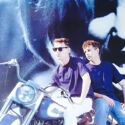
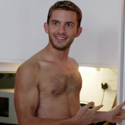



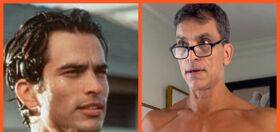






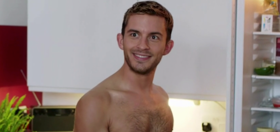
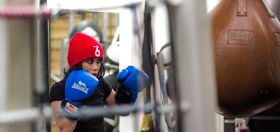




Josh447
Excellent. Really good stuff. I especially like the part where you said you use meditation to disconnect from your story. I think that’s really one of the main focuses of meditation itself so that you can think less and be more. I liked that wording.